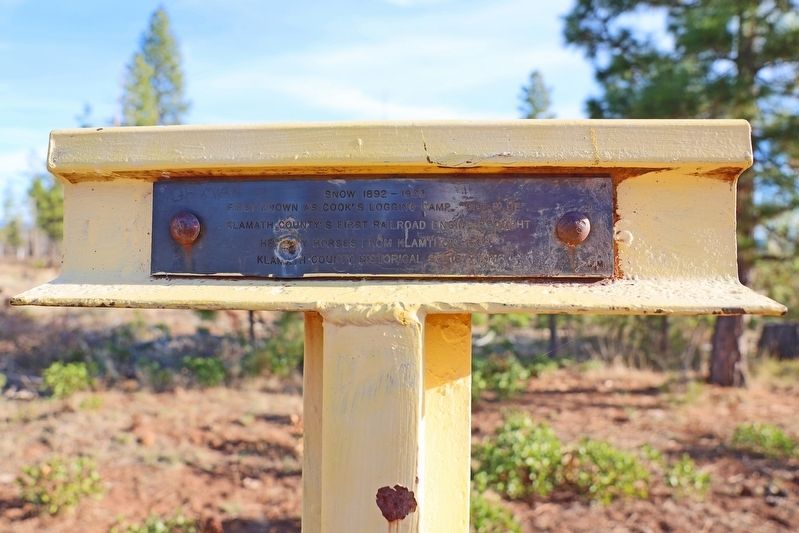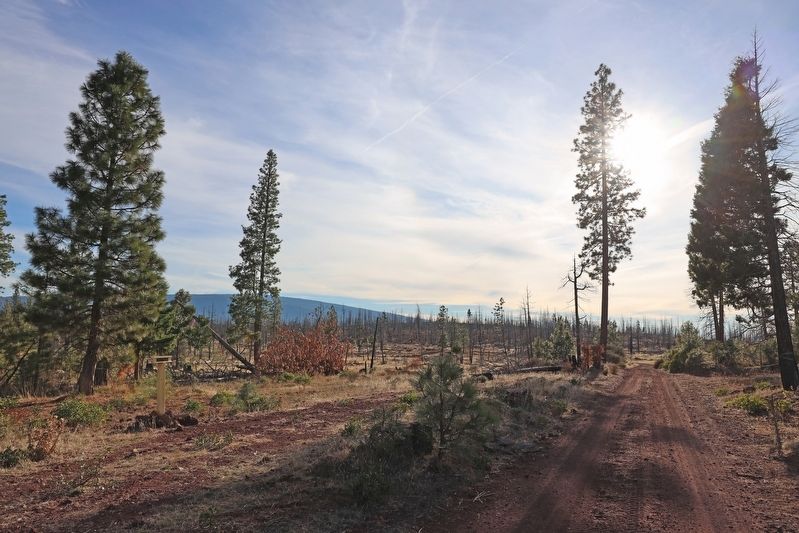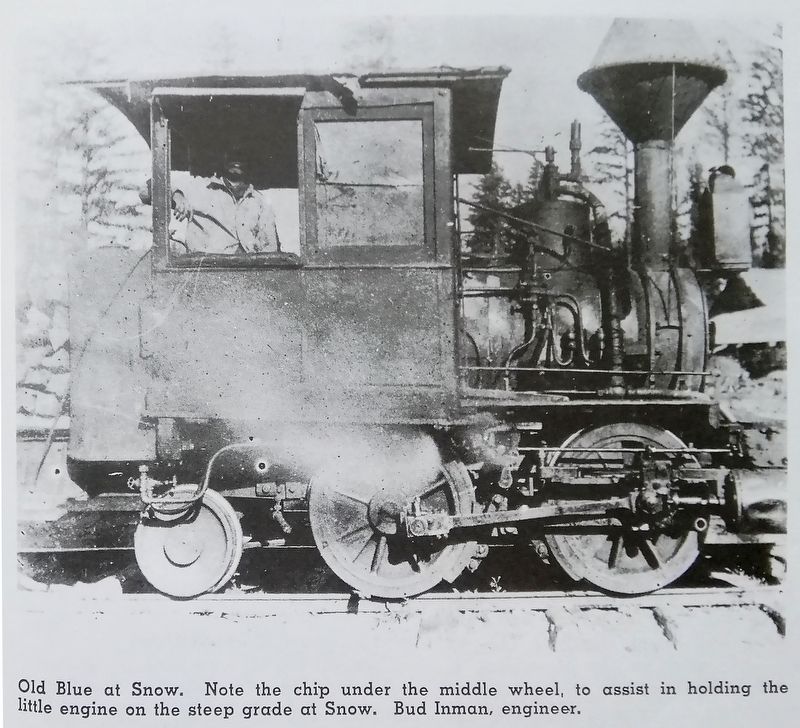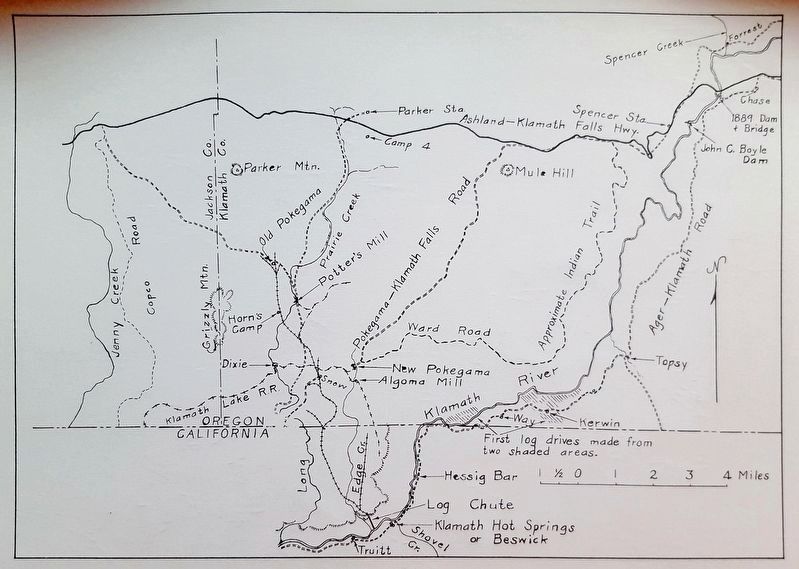Near Keno in Klamath County, Oregon — The American West (Northwest)
Snow
1892–1903
Klamath County’s first railroad engine brought
here by horses from Klam[a]thon, 1893.
Erected 1976 by Klamath County Historical Society.
Topics. This historical marker is listed in these topic lists: Horticulture & Forestry • Railroads & Streetcars.
Location. 42° 1.564′ N, 122° 14.451′ W. Marker is near Keno, Oregon, in Klamath County. Touch for map. Marker is in this post office area: Keno OR 97627, United States of America. Touch for directions.
Other nearby markers. At least 8 other markers are within 8 miles of this marker, measured as the crow flies. Algoma Sawmill (approx. 0.9 miles away); New Pokegama - 1903-1909 (approx. one mile away); Potter's Mill (approx. 2 miles away); Horn's Camp 1895 - 1898 (approx. 2.2 miles away); Old Pokegama (approx. 3.2 miles away); Kerwin Ranch (approx. 6.1 miles away); Weyerhaeuser Camp 4 (approx. 6.7 miles away); Parker Station (approx. 7.2 miles away). Touch for a list and map of all markers in Keno.
More about this marker. This historical marker is not easily accessible and only during warm weather months (May 15-Oct. 1) and preferably with a 4x4 vehicle with high clearance. Most of the old logging roads leading to this marker and other historical markers in the area are on private timberland open to the general public (for now). This policy may change, as it has become more common in recent years for private landowners to block public access to forest roads due to vandalism, illegal dumping and illegal game hunting. Please be respectful of any landowner signs you may encounter.
Regarding Snow. Klamathon (misspelled on the marker text) was a former logging town located south of here and along the Klamath River. The town suffered a devastating fire on October 13-14, 1902 that burned down a large logging mill, two box factories and a number of homes and businesses. A grass fire years later destroyed virtually any remaining evidence of the former boom town.
In Issue No. 3 of Klamath Echoes, a journal published by the Klamath County Historical Society from 1966, a passage highlighting Camp Snow from February 9th, 1893 in the Yreka Journal reads:
"W.H. Beatley states that no logs are being cut now by the Pokegama company, there being about two million feet in the (Klamath) river already. The logs are sailing beautifully and the Pokegama mill will start on Feb. 10th. The whole crew consists of Norwegians and Swedes from Michigan—lumbermen of first rate ability. When the (Cook's) mill starts, the foreigners will act as millmen, while local help will
be secured for the logging camps. The peeled logs run down the half mile chute in 10 seconds, making a tremendous dash into the Klamath. The logging camp looks quite citified in the timber, with its ten dwellings, two stores, a blacksmith shop and sidewalks 400 feet long. Carloads of logs run swiftly to the river, the empty cars being drawn back by horses. Cook, one of the company, has gone east to buy an engine (Old Blue)."
Klamath Echoes states: "The above logging camp, heretofore called “Cook's Camp,” eventually became known as “Snow.” Exactly when is unknown. However, a post office of “Snow,” was opened June 22, 1894 with Adelbert B. Smith as postmaster. “Snow” may have been named for, or was located on, or near the homestead or timber claim of William Snow, who resided in the neighborhood at the time, although at least three old timers say it was named for or on account of the deep snows there in the winter.
The following bit of information is related, possibly having some bearing on the origination of the name “Snow,” and comes from the Siskiyou News of June 27, 1896" "Wm. Snow of Snow, Oregon came down from camp last Sunday. How are you, Bill? When asked is he walked down, replied, 'No, I came a foot."
Credits. This page was last revised on July 10, 2020. It was originally submitted on July 5, 2020, by Douglass Halvorsen of Klamath Falls, Oregon. This page has been viewed 196 times since then and 18 times this year. Photos: 1, 2, 3, 4. submitted on July 6, 2020, by Douglass Halvorsen of Klamath Falls, Oregon. • J. Makali Bruton was the editor who published this page.



